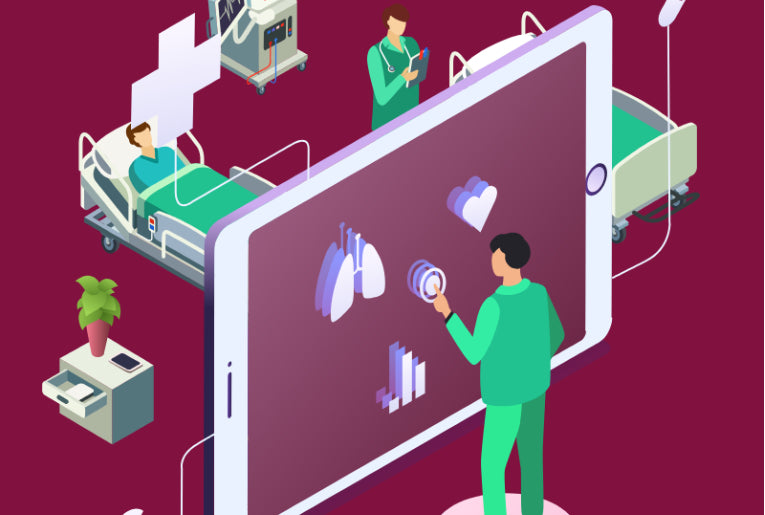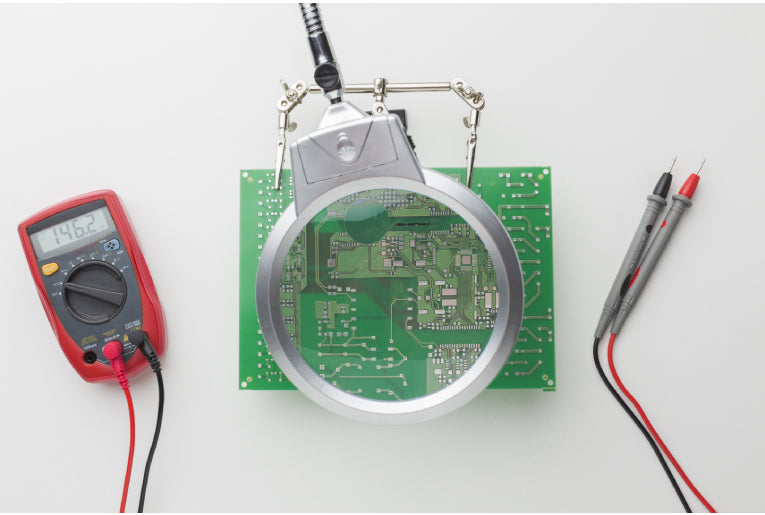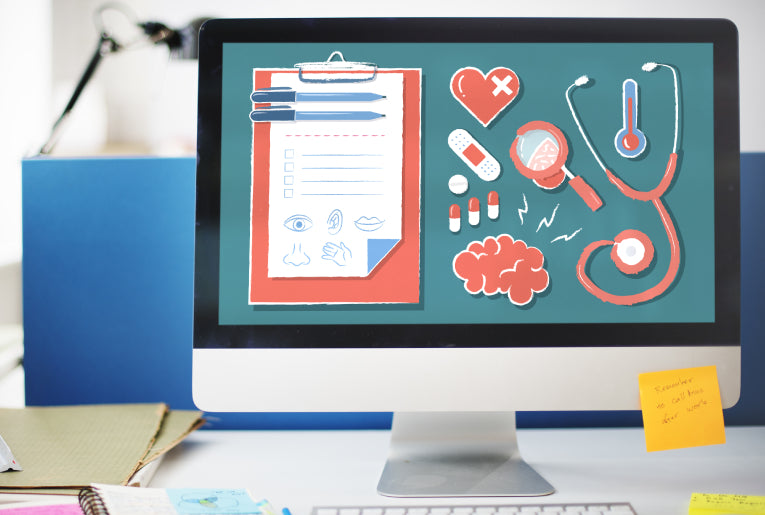From Idea to Impact: The Complete Guide to Medical Device Design and Regulation

Medical devices are vital instruments that can improve health and improve the outcomes of patients and can save lives. Making and the introduction of a medical device into the market is a difficult and highly controlled process. This guide takes you through the entire process beginning with the concept to having a significant difference in the field of healthcare. This guide will concentrate on design and development as well with the regulatory frameworks currently implemented in the United States (FDA) and the European Union (EU).
Understanding Medical Device Design and Development
- Conceptualization
The path to a medical device starts from an idea. No matter if you're a physician or engineer or an business owner, the initial step is to determine a need or requirement in healthcare that your device is able to solve. Some of the most important questions you should ask in this process include:
What is the problem you are trying to solve?
Are your ideas original and original?
Who will be your audience?
What are the trends in the market and the competition?
- Feasibility Assessment
When you've got a solid plan, you'll have to carry out a feasibility study. It involves looking at the financial, technical as well as regulatory aspects of the idea. These are a few things to consider:
Technical potential: Can you develop this device using the existing technologies and available resources?
Financial viability: Do you have enough funds to pay for the development, research as well as regulatory expenses?
The feasibility of regulating: Can your device comply with the requirements of regulatory authorities for your intended markets?
- Design and Development
If you have a viable idea You'll then move to the development and design phase. It's where you'll develop prototypes, test to refine the device. The most important steps are:
- Conceptual design Sketching out initial ideas as well as concepts.
- The process of prototyping involves Designing digital or physical prototypes to test.
- Evaluation: Evaluating the device's security, efficiency and dependability.
- Iterative design Constantly improving the technology in response to test results.
- Regulatory Strategy
Through the entire design and development procedure, it's important to create a strategy for regulating. Being aware of the regulations in the beginning will reduce both time and money in the end. The strategy must take into account the FDA as well as EU rules, since they are among the major regulatory authorities worldwide in the field of medical devices.
- Navigating the FDA Regulatory Framework
The United States Food and Drug Administration (FDA) has an important role in the regulation of medical devices. The FDA categorizes medical devices in three categories, based on the risk they pose classified as Classes I and II as well as Class III.
- Class I Devices
They're low-risk equipment like tongue depressors, elastic bandages and tongue depressors. They're subject to general control, including the requirement of labeling and adhering to best manufacturing procedures (GMPs). The majority of Class I devices are able to be sold without FDA clearance or approval however they have to conform to the requirements of regulatory authorities.
- Class II Devices
Class II devices come with moderate risks for hearing aids, as well as infusion pumps. They need special control and may require the performance standard, post-market surveillance and patient registrations. For bringing an Class II device to market typically, it's necessary to get FDA approval through the process of a 510(k) notice prior to market or premarket approval (PMA) for more risky Class II device.
- Class III Devices
They are devices with high risk, such as heart valves as well as implantable pacemakers. Class III devices must receive the approval of a premarket (PMA) by the FDA prior to being advertised. The PMA procedure involves extensive research and testing to establish the effectiveness and safety of a product.
- Pre-submission Meeting
Prior to submitting an official request for approval or clearance prior to submitting a formal application for clearance or approval, you should schedule an appointment prior to submission with FDA. It allows you to talk about your product, its regulatory plan as well as any possible issues in detail with FDA reviewers. You can gain important insights, and to ensure that your application is prepared.
- Pre-market Submissions
The kind of submission that you'll require is determined by the classification of your device. These are the most common types:
- 510(k) Premarket Notification The most commonly used submission to Class II device. It is a proof that the device is in a significant way comparable to an legally-marketed device (predicate) and, therefore, must be approved for marketing.
- premarket approval (PMA): Required for Class III devices. PMAs require extensive clinical tests and evidence to demonstrate the safety and efficacy of the device. This is a much more thorough process that 510(k).
- Post-market Requirements
However, even after the device has been placed in the marketplace There are responsibilities that remain:
- Quality Systems Regulation (QSR): Compliance with QSR is a requirement for all device makers. It defines requirements for effective manufacturing methods (GMPs) as well as recordkeeping and quality control.
- Abnormal Event Reporting: Manufacturers have to report negative incidents and malfunctions of their products for the FDA. The timely reporting of adverse events is vital to ensure safety for patients.
- Promotion and Labeling: Making sure your product's labels and promotional material comply with FDA guidelines is essential. Incorrect claims could result in the issuance of regulatory action.
- Navigating the EU Regulatory Framework
It is the European Union has its own regulations that regulates medical devices. This saw significant modifications in 2021, with the introduction of Medical Device Regulation (MDR) as well as the In Vitro Diagnostic Regulation (IVDR).
- Device Classification
The EU classification of medical devices is four types, with a range of class I (lowest risk) up to the Class III (highest risk). This classification is determined by aspects like the intended usage and duration of usage as well as the degree of invasiveness.
- Conformity Assessment
Procedures for conformity assessment differ based upon the type of device. These include self-assessment and the notification organization (third-party assessment) and full system evaluation.
- Technical Documentation
Manufacturers must maintain detailed technical documents that demonstrate the product's performance and safety. The documentation should be available to regulators upon request.
- CE Marking
In order for a medical device to be advertised within the EU the device must be branded with the CE symbol, which signifies conformity to EU laws. The CE mark indicates that the product has passed tests and has met the requirements for standards.
- Post-market Surveillance
Manufacturers should establish and manage an after-market surveillance program for monitoring the performance and security of their equipment. It also requires reporting any incident to authorities in charge.
- Clinical Evaluation
Evidence from clinical studies is an important element of the EU procedure for regulation. Manufacturers are required to conduct clinical tests to prove that their products are secure and efficient.
- Unique Device Identification (UDI)
Like the FDA's method, the EU mandates that all devices must include a UDI to track as well as traceability.
- Notified Bodies
Notified bodies are independent organisations established by EU member states to examine medical devices' conformity. The manufacturers work with these bodies to get the regulatory approval needed.
- Achieving Global Compliance
If you're planning to promote your medical device in the United States and the European Union it is necessary to comply with the requirements of regulatory authorities for both countries. Even though both the FDA and EU are distinct in their regulations, there are several commonalities to bear at heart:
- Harmonized Standards
Both FDA as well as the EU have recognized specific international standards. Compliance with these standards could make the regulatory process easier and show your determination to ensure safety and quality.
- Risk Management
Both regulators require thorough risk management procedures. The identification and mitigation of risks is vital for the security of both users and patients.
- Quality Management Systems
The establishment of a solid QMS (QMS) is a crucial prerequisite for both FDA as well as EU. The adhering to best manufacturing procedures (GMPs) is crucial in ensuring the product's quality.
- Post-market Surveillance
The monitoring of the efficiency of your device following its launch is crucial for both FDA and the EU. Rapid reporting of adverse events is vital in both areas.
- Clinical Data
Both FDA as well as the EU demand clinical studies to prove the efficacy and safety in medical device. Create a comprehensive plan for studies and data gathering.
- The Road to Impact
Making a medical device available to the market and making an contribution to health care is an arduous however rewarding experience. These are additional tips for maximizing the effectiveness of your device:
- Market Access Strategy
Design a market access plan that incorporates distribution, pricing, as well as payment plans. Knowing the dynamics of markets is vital to successful implementation.
- User-Centered Design
Make sure you are focusing on user-centric design principles in order so that your device will meet the demands and requirements of health personnel as well as patients.
- Regulatory Changes
Be informed of changes in the regulations within both the FDA as well as the EU. Regulations change and compliance is a continuous obligation.
- Post-market Feedback
Get feedback from your users as well as healthcare professionals to continually make improvements to the device you use. The feedback loop could result in product improvements and improvements.
- Collaboration
Work with researchers, healthcare professionals as well as other key stakeholders during the course of development. The insights they provide can be valuable.
- Global Expansion
Explore expanding to other markets outside of FDA or EU. Every market has its own rules and regulations, as well as market dynamic.
Conclusion
Making a medical device go from conception to implementation is an intricate and restricted process. However, it's an opportunity to be a major improvement to healthcare. The understanding of the regulatory frameworks of both the FDA as well as the EU is crucial, since the compliance requirement is fundamental. Following the procedures outlined in this article and remaining dedicated to quality, safety and innovation You can overcome the obstacles and help improve the quality of healthcare for patients across the globe. Keep in mind that the road to change may take a long time yet the opportunity for significant change is unimaginable.
Leave a comment (all fields required)
Comments will be approved before showing up.


